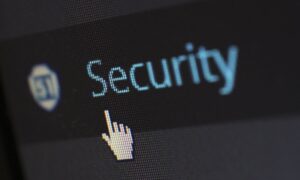You need to protect your online presence in this day and age of widespread cyber threats. The looming menace of cybercrime urges us to fortify our defenses. Two-Factor Authentication (2FA), a strong barrier against illegal access and data breaches, is leading this battle. This in-depth guide aims to equip you with comprehensive knowledge about 2FA, empowering you to navigate the digital realm with confidence and shield yourself from the constantly evolving landscape of cyber threats. Delve into the significance of 2FA, discover its practical applications, and adopt recommended practices to enhance the security of your online activities. Continue reading this blog to arm yourself with the skills and information needed to safely traverse the digital landscape.
What is Two-Factor Authentication (2FA)?
The use of two-factor authentication (2FA) adds an extra degree of security to online accounts and digital identities. Diverging from traditional authentication, which commonly relies on a username and password pairing, 2FA mandates the utilization of two distinct forms of identity. As sophisticated assaults have increased, so too has single-factor authentication’s vulnerability.
The implementation of 2FA requires users to furnish two distinct forms of identification, thereby introducing an additional step in the authentication process. This supplementary layer of security significantly raises the difficulty for unauthorized users attempting to access accounts, even if they successfully acquire the user’s password.
Types of 2FA Factors:
The two factors in 2FA typically fall into the following categories:
1. Something You Know:
- Password: Craft strong, complex passwords combining uppercase and lowercase letters, numbers, and special characters.
- Pin Code: Typically used in conjunction with another factor, such as a bank card.
2. Something You Have:
- Mobile Phone: Receive a code via SMS to enter after providing your username and password.
- App: Utilize apps like Google Authenticator, generating time-sensitive codes for identity verification.
- USB Key: Advanced security measure where the key itself provides the code, enhancing protection.
3. Something You Are:
- Fingerprints: Commonly integrated into phones and computers for biometric authentication.
- Eye (Blood Vessels): Eye tracker scans unique blood vessel patterns for added security.
- Eye (Iris): Examines the iris, similar to a fingerprint, for distinctive identification.
- Face: Cutting-edge facial recognition technology, exemplified by Apple’s FaceID.
- Voice: Voice recognition systems authenticate users based on their spoken words.
4. Where You Are:
- Your Positions: Location-based authentication where certain activities are allowed based on your physical location.
- Proximity to Other Devices: Automatic login when connected to specific Bluetooth devices.
The Importance of 2FA:
The prevalence of online service breaches underscores the necessity of employing 2FA. Hackers frequently exploit stolen information to infiltrate various accounts. You block their attempts by using 2FA, even if they know your account and password. This method proves particularly effective when individuals reuse passwords across multiple platforms, a common yet risky practice. The significance of 2FA becomes evident in the face of rampant cybercrimes, where traditional username and password combinations no longer suffice to protect sensitive information.
1. Google Authenticator:
Google, a tech giant with vast user databases, has implemented 2FA across its various services. Users can opt for 2FA through the Google Authenticator app, providing an additional layer of security for Gmail, Google Drive, and other Google services. This guarantees that without the second authentication factor, unauthorized access is prevented even in the event that login credentials are compromised.
2. Apple’s Two-Factor Authentication:
To improve user account security, Apple has incorporated two-factor authentication into its ecosystem. With this feature, iCloud, Apple IDs, and other Apple services are further protected. On their reliable devices, customers receive a verification number, guaranteeing that only authorized users can access and control their Apple accounts.
3. Facebook’s Login Approvals:
Facebook, being one of the largest social media platforms, understands the importance of securing user accounts. The platform offers 2FA through Login Approvals, where users receive a code on their mobile devices to confirm their identity during the login process. This additional step deters unauthorized access, safeguarding personal information shared on the platform.
4. Banking and Financial Institutions:
2FA has been implemented by numerous banks and other financial organizations to safeguard their customers’ accounts from fraudulent activity. This frequently entails the user having something in addition to knowing something (password) e.g., a code sent to a registered mobile number. This ensures a multi-layered defense against unauthorized financial transactions.
5. Twitter’s Two-Factor Authentication:
Twitter has added two-factor authentication (2FA) to improve account security. Users can activate this function, which sends a verification code to their registered mobile number when they log in from an unidentified device. This adds another layer of protection to prevent unauthorized access to Twitter accounts.
How to Enable 2FA?
The process of enabling 2FA varies among services, often implemented during password changes or in security settings. While some platforms automatically remember your device as a second factor, others, like online banks, consistently enforce 2FA for added protection.
Password Best Practices:
- Never reuse passwords to prevent cascading breaches.
- Create complex, long passwords to thwart hackers’ initial attempts.
- Make complex passwords and store them securely by using a password manager.
Conclusion
Implementing 2FA and adopting robust password practices are essential steps to safeguard your digital identity. With the understanding of 2FA and embracing these cybersecurity solutions, you significantly reduce the risk of falling victim to online threats and enhance the overall security of your online presence.


































